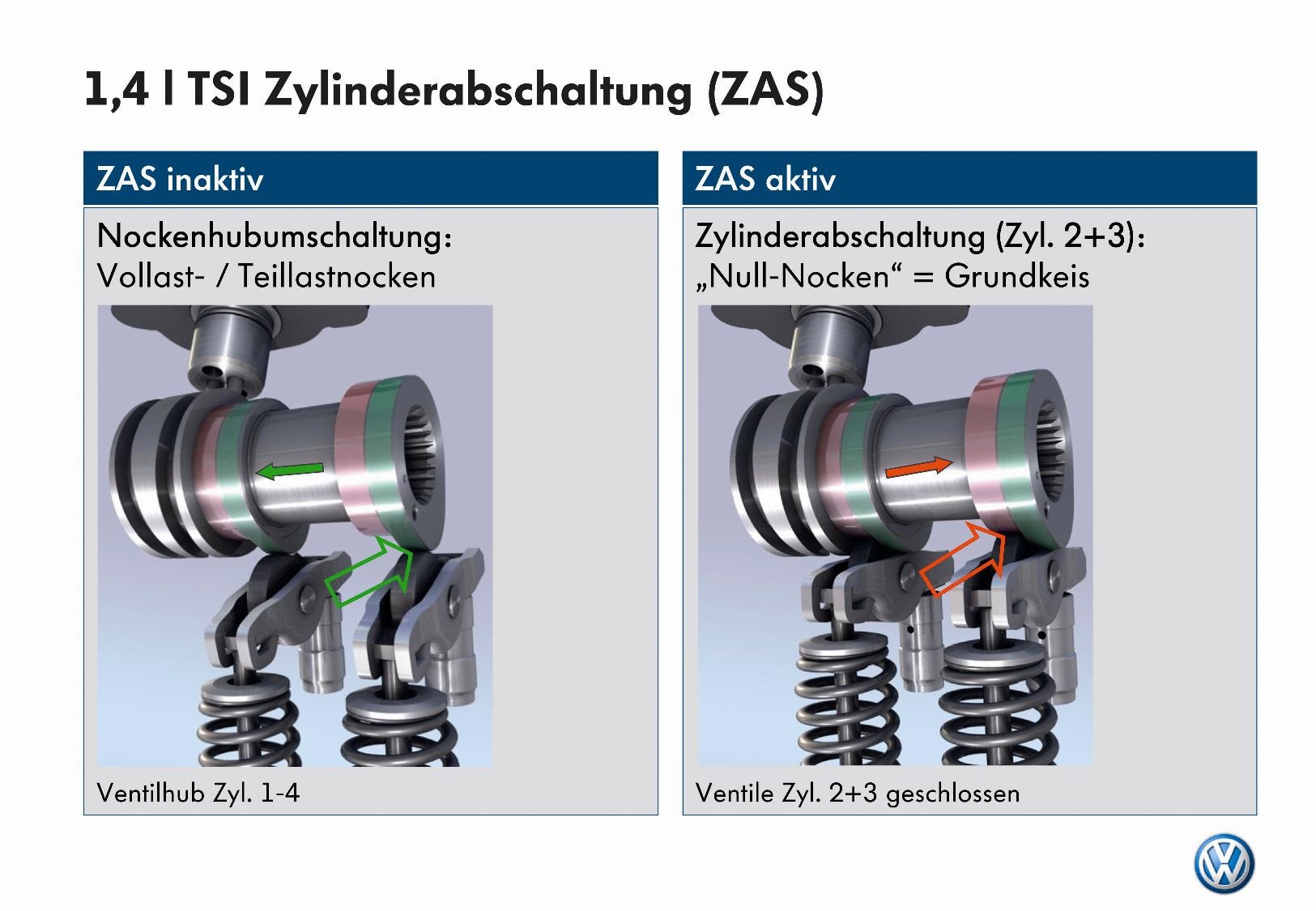Yesterday, we told you that Volkswagen was working on a cylinder deactivation system for a 1.4-liter TSI engine. Now, the company is offering us official details about the system, as well as a set of images that explain the development.
We have to start by telling you that the 1.4-liter four-cylinder TSI engine uses a system that temporarily shuts down two of its cylinders under low to medium loads, which allows the unit to reduce fuel consumption by 0.4 liters per 100 km (NEDC driving cycle). The additional start-stop function brings the savings to around 0.6 liters per 100 km.
VW explains the you can make the most out of this technology when driving at constant moderate speeds. For example, in third or fourth gear, the savings account to almost one liter per 100 km.
The two cylinders are deactivated only between 1,400 and 4,000 rpm and torque is between 25 and 75 Nm, which applies to 70 percent of the driving distance in the EU fuel economy driving cycle.
"As soon as the driver presses the accelerator pedal sufficiently hard, cylinders 2 and 3 are reactivated imperceptibly. The system takes its information from the accelerator pedal sensor to detect the mode of driving. If the driving exhibits a non-uniform pattern – for example, while driving in roundabout traffic or in a sporty style on a country road – shut-off functionality is automatically suppressed," a VW statement reads.
The 1.4TSI with cylinder shut-off, which will be offered on multiple models starting from early 2012, meets EU6 emission standards, with the technology set to be used on multiple VW Group engines in the future.
We have to start by telling you that the 1.4-liter four-cylinder TSI engine uses a system that temporarily shuts down two of its cylinders under low to medium loads, which allows the unit to reduce fuel consumption by 0.4 liters per 100 km (NEDC driving cycle). The additional start-stop function brings the savings to around 0.6 liters per 100 km.
VW explains the you can make the most out of this technology when driving at constant moderate speeds. For example, in third or fourth gear, the savings account to almost one liter per 100 km.
The two cylinders are deactivated only between 1,400 and 4,000 rpm and torque is between 25 and 75 Nm, which applies to 70 percent of the driving distance in the EU fuel economy driving cycle.
"As soon as the driver presses the accelerator pedal sufficiently hard, cylinders 2 and 3 are reactivated imperceptibly. The system takes its information from the accelerator pedal sensor to detect the mode of driving. If the driving exhibits a non-uniform pattern – for example, while driving in roundabout traffic or in a sporty style on a country road – shut-off functionality is automatically suppressed," a VW statement reads.
The 1.4TSI with cylinder shut-off, which will be offered on multiple models starting from early 2012, meets EU6 emission standards, with the technology set to be used on multiple VW Group engines in the future.



